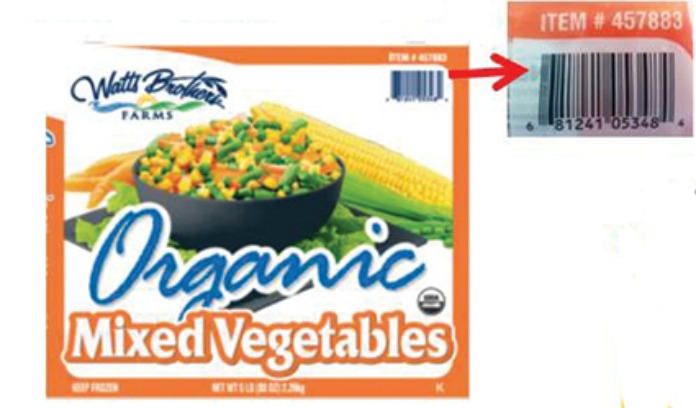Every year we gather information about the largest food poisoning outbreaks of the last 12 months. There were many outbreaks this year; some sickened hundreds of people. The largest outbreaks were confined to one state. The outbreaks in this list crossed state lines.

The tenth largest multistate food poisoning outbreak of 2016 was a Listeria monocytogenes outbreak linked to frozen vegetables. At least 9 people in 4 states were sickened in this particular outbreak. All of those sickened were hospitalized, and three people died, although the listeriosis illness was considered a factor in only one of those deaths.
Epidemiologic and traceback evidence found that frozen vegetables produced by CRF Frozen Foods of Pasco, Washington and sold under different brand names were the likely source of illness in this outbreak. CRF Frozen Foods recalled 11 frozen vegetable products on April 23, 2016, and expanded that recall on May 2, 2016 to include all organic and traditional frozen vegetable and fruit products made in its Pasco, Washington facility since May 1, 2014.
More than 350 consumer products under 42 brand names were recalled. And 100 other secondary recalls for products made with the recalled products were issued. You can find the full list of recalled products at Foodsafety.gov. Some of the recalled brands include products from Piggly Wiggly, Pictsweet, Hy-Vee, Garland, Kroger, Ajinomo Windsor, Harris Teeter, Watts Brothers, Pita Pal, and others.
Because the products can be stored in freezers for years, officials were concerned that some people may have them in their homes and will use them because they are not aware of the outbreak and the recalls. One of the problems with these types of products is, if they are heated in the microwave oven, cold spots can remain that can harbor live bacteria.
Since Listeria monocytogenes bacteria are not killed by freezing, the bacteria will remain in the product and will start growing once the temperature of the product reaches 32°F. This pathogenic bacteria can grow at temperatures below 40°F.
Like many Listeria monocytogenes outbreaks, this one was partially identified by the government’s PulseNet database. Three of these illnesses were reported in 2016, but six of them occurred in 2013, 2014, and 2015 and were found through the PulseNet system.
Ill persons ranged in age from 56 to 91 years, with a median age of 76. Seventy-eight percent of these patients were female. Listeriosis was considered to be a cause of death for one of the patients who lived in Connecticut, but was not considered a cause of death for the other two deaths in Maryland and Washington.
The outbreak was first identified in March 2016. Four of the nine ill persons, or their caregiver, were interviewed about the foods they ate before they got sick. Three of those four people reported buying and eating frozen vegetables the month before their illnesses began.
Two people reported eating Organic by Nature brand frozen vegetables. The third ill person ate O Organic band. Both of those brands were produced by CRF Frozen Foods.
Then, during routine product sampling, the Ohio Department of Agriculture collected packages of frozen vegetables from a store. They isolated Listeria bacteria from True Goodness by Meijer brand frozen organic petite green peas and in True Goodness by Meijer brand frozen organic white sweet cut corn. Those products are produced by CRF Frozen Foods.
Using whole genome sequencing, officials found that the Listeria from the frozen corn was closely related to eight isolates taken from ill people. The isolate from the green peas was closely genetically related to an isolate from one ill person.
FDA collected environmental samples from Oregon Potato Company, located in Pasco, Washington and isolated Listeria from those samples. Whole genome sequencing found that the Listeria in those samples were closely related to eight isolates from ill persons in this outbreak. Oregon Potato Company recalled wholesale onion products made in their facility, which again triggered more secondary recalls.
The outbreak is over, but people could still have these products in their home freezers, especially since so many products were recalled. Check your freezer and the list of recalled products carefully. If you have any, discard them, then clean out your freezer with a mild bleach solution to kill any remaining bacteria. Wash your hands well after handling these products.




